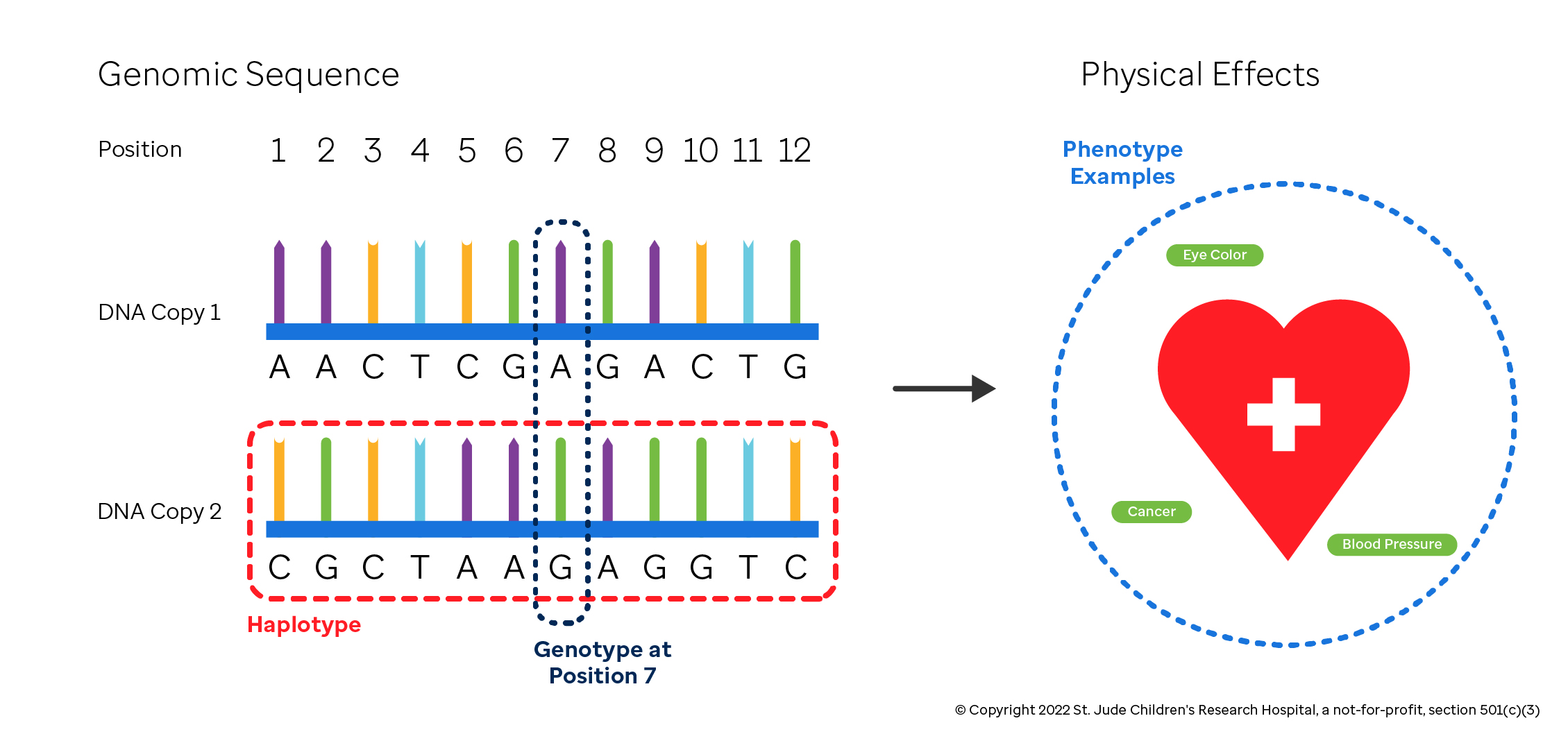Genotype, Phenotype and Haplotype
Genotype
Genotype is an overloaded term that can mean one of two things:
- Most commonly within the area of computational genomics, the term genotype
refers to the particular alleles found at a given position or locus within the
genome. For example, if position 7 on the theoretical chromosome in the
figure below contains an
Aon one copy and aGon the other copy, this is said to be a genotype call ofA/Gat position 7. - Less commonly within the area of computational genomics, the term genotype will be used to reference an organism's complete set of genetic material, including all of the variants included therein.
Which definition is implied is largely based on the context of the conversation: if one is talking about a system-wide effect that is likely to be caused by the complicated interaction(s) between various parts of the organism's genetic code, then the second definition is more suited. Within computational genomics, we are often concerned with highly focal changes, hence the preference of the first definition above.
Throughout this guide, we'll assume the first definition for genotype unless otherwise specified.
Phenotype
An observed (often physical) trait that specific genes confer is known as a phenotype. When we see a person with blue eyes (a phenotype), we know that they carry a set of specific genetic sequences that makes that eye color possible (a genotype). In cancer, the features of the disease are the phenotype and the mutations and variants within the individual make up the genotype. In genomics, biologists seek to link genotypes to phenotypes to improve diagnoses and understand how cancer works. This phenomenon is known as a genotype-phenotype relationship.
Haplotype
Recall that each human genome is composed of pairs of chromosomes, one inherited from each parent. That means, with a few exceptions, nearly every gene has two copies. Often the two DNA sequences of that encoded gene differ. Each distinct copy is a haplotype for that gene. Together the two haplotypes make up the genotype, and the proteins they produce determine the phenotype. A variant is often detected in only one copy of the gene. If the variant causes a loss of function in an important gene, that one mutation may be insufficient to cause cancer but may create a predisposition to cancer later in life.
